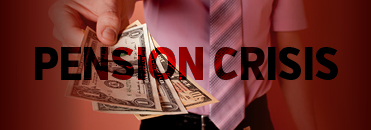Media

Pension Costs Forcing Teacher Layoffs
We’ve debunked on this blog the “billion dollar education cut” myth time and time again.
Yet another common refrain—even among those who admit state spending has increased, which it certainly has—is that new expenditures are not “showing up in the classroom.” In other words, school districts are hamstrung by pension costs and have to make cuts in other areas.
This point does indeed carry water.
Take a look at how Public School Employees’ Retirement System (PSERS) contributions have skyrocketed over the last five years in Philadelphia and Pittsburgh, the state’s two largest districts. We can also project the coming costs for 2013-14 and 2014-15 using the mandated contribution rates for those respective years.
In Pittsburgh, pension payments rose from $11 million in 2008-09 to $26 million in 2012-13, and an estimated $45 million in 2014-15. In Philadelphia, payments rose from $42 million to more than $101 million, and will reach $175 million this coming school year.
The statewide retirement contribution trend tells the same story. From 2008-09 to 2012-13—a span of just five years—statewide PSERS costs nearly tripled. Estimated payments for this year are about 5 times what they were in 2008-09.
With contribution rates continuing to rise, the fiscal outlook only grows more ominous in the years ahead.
To put this in perspective, consider how these costs compare to teachers’ salaries. Pension costs from all public schools will have risen by approximately $1.9 billion from 2008-09 to 2014-15. Given that the average teacher salary is $63,500, that increase in pension payments equals the salary of 30,400 public school teachers.
The bottom line is that Pennsylvania faces a genuine pension crisis. School districts are simply running out of options. Even increased education revenue will not be able to offset the growing retirement costs.
Responsible pension reform is the best way to ensure that future education funding truly finds its way into the classroom.